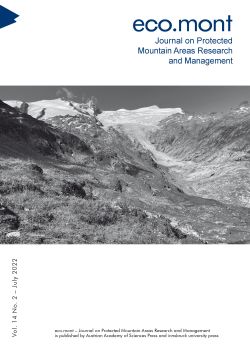
Eco.mont Vol. 14 Nr. 2, pp. 37-47, 2022/06/22
Journal on Protected Mountain Areas Research and Management

The diversity and community structure of soil nematodes around Lake Paiku in Mount Qomolangma (Mt. Everst) National Nature Reserve were investigated, to obtain soil ecosystem information, assess local soil quality, and provide the basis for environmental protection. Twelve plots were selected for typical vegetation communities around the lake. Within each plot, soil samples were collected from depths of 0 to 25 cm. The Baermann tray method was used to extract nematodes. Overall, we acquired 2,272 nematodes belonging to 2 classes, 5 orders, 32 families and 48 genera. The nematode density was 0–413 individuals per 100 g dry soil (average 109). Bacterivores, predators and omnivores were the dominant trophic groups. The individual density and genus numbers of soil nematodes were highest in the northeast and southeast corners of the lake. For most of the area studied, soil nutrients were at a medium level and there was no human disturbance. The energy flow of the soil food web tends to be via fungus decomposition channels. The redundancy analysis shows that soil-available P, pH, alkali-hydrolytic N, and soil-available K have strong effects on the soil nematode community, whereas the soil’s total N, organic matter and water content have only minor effects. Soil-available P and pH were negatively correlated with nematode diversity. Soil nematodes showed surface aggregation; the soil food webs tend to have complex structures because of the presence of K-strategist organisms; the lakeshore ecosystem is in the late stage of succession and relatively stable. The increasing amount of soil-available P and increasing pH value corresponded to reduced biodiversity and unstable soil nematode communities. A greater diversity of nematodes were found in the Lake Paiku region in comparison to studies carried out in alpine meadows of the Chang Tang (or Northern Tibet) Grasslands.
Keywords: biodiversity, soil food web, Mt. Everest, nature reserve